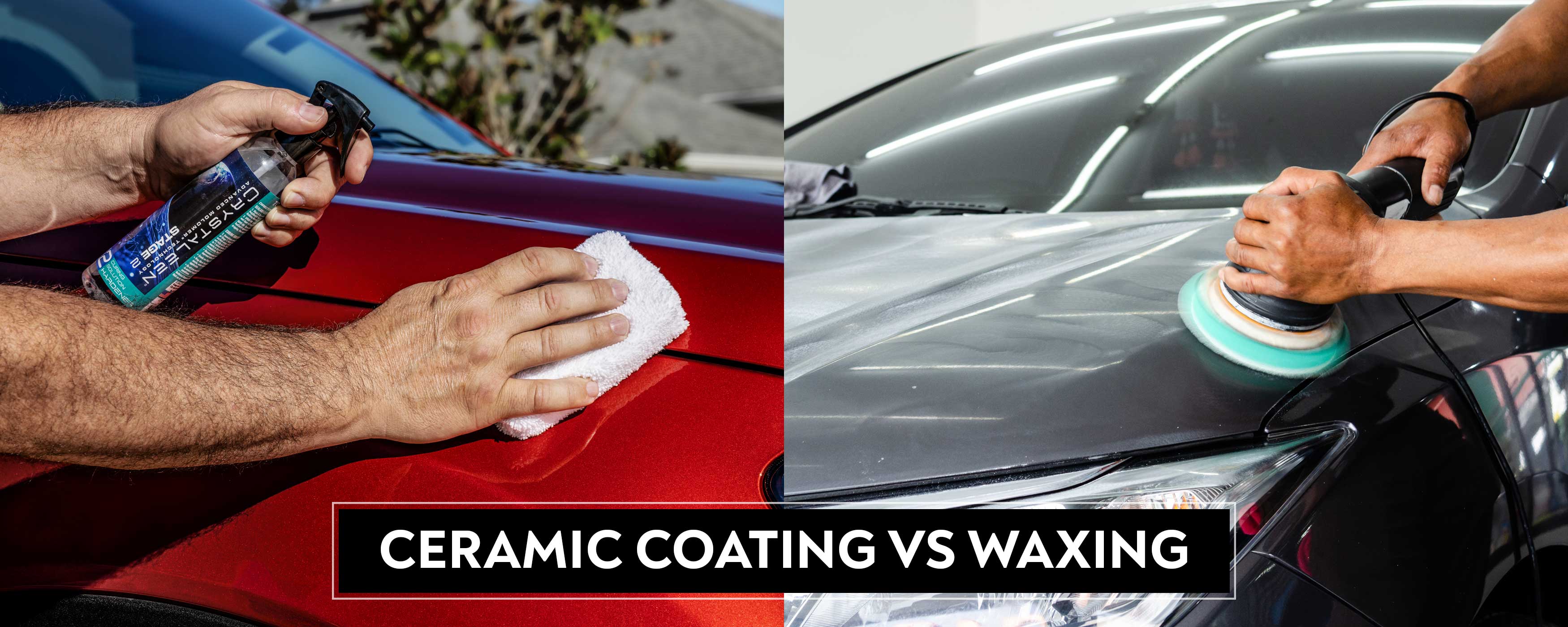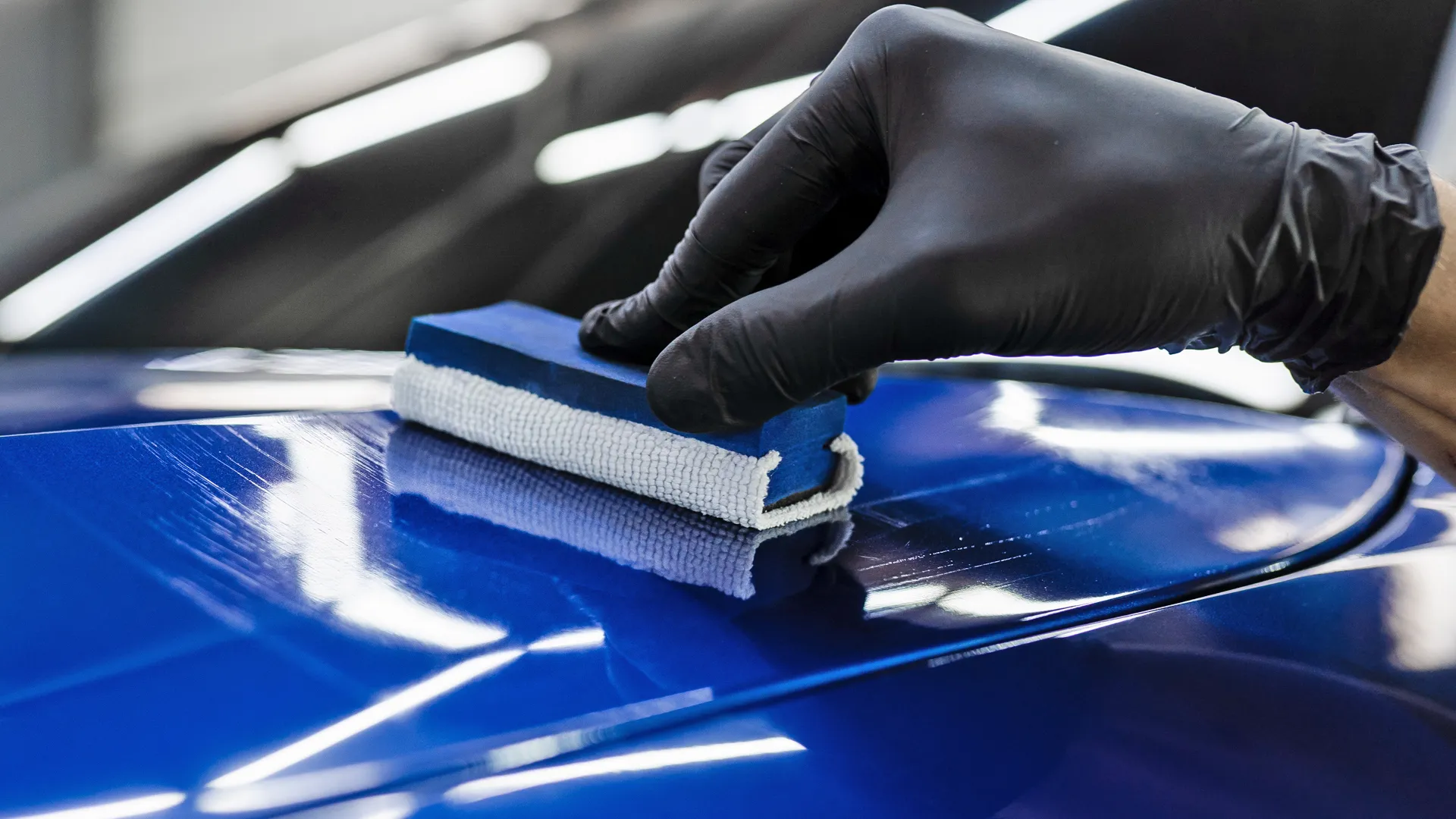How to Apply Ceramic Coating and Achieve Professional Results
Ceramic Coating vs. Standard Wax: Which Provides Much Better Long-Term Protection?
The dispute in between ceramic coatings and traditional wax for automobile security has actually amassed significant focus among automobile enthusiasts and specialists alike. While both satisfy of guarding paint, their distinctions in sturdiness, application, and lasting upkeep expenses may affect a customer's selection. Ceramic coatings flaunt premium longevity and resistance to environmental variables, yet the intricacy of their application questions concerning accessibility and functionality. As we check out these contrasting alternatives, it becomes necessary to consider not only the immediate advantages however additionally the implications for car treatment in time.
Overview of Ceramic Finishing
Ceramic covering has actually gotten considerable appeal amongst auto lovers and detailers alike because of its sophisticated safety qualities. This innovative modern technology is made to produce a resilient, hydrophobic guard over a lorry's paint surface, considerably improving its resistance to environmental pollutants such as dust, UV rays, and chemical discolorations. Unlike typical wax, which gives a temporary layer of defense, ceramic finishes bond at a molecular degree with the paint, supplying long-lasting durability-- typically expanding past two years with appropriate maintenance.
The application process involves careful prep work of the lorry's surface area, including cleansing and brightening to make sure optimum adhesion. Once used, the coating cures to form a durable layer that not only includes depth and gloss to the paint however also simplifies maintenance. With its hydrophobic residential properties, ceramic layer allows water and dust to glide off even more easily, lowering the regularity of cleans and decreasing the threat of swirl marks.
Furthermore, ceramic finishes are available in different solutions, permitting customers to choose items tailored to their details requirements and preferences. Generally, ceramic covering represents a significant development in paint security innovation, providing remarkable performance contrasted to traditional alternatives.
Overview of Conventional Wax
Typically considered as a staple in auto care, wax acts as a prominent selection for those seeking a straightforward technique to enhance and protect their vehicle's paint - ceramic coating. Automotive wax typically makes up all-natural active ingredients, such as carnauba, or artificial substances, developed to produce a safety layer on the surface of the paint. This layer not only boosts the vehicle's gloss and radiate but additionally provides a barrier against environmental pollutants
The application of wax is generally easy to use, making it available for both specialists and do it yourself lovers. It can be used by hand or device, permitting convenience in the describing procedure. Once used, wax requires a treating duration, after which it hardens to create a safety covering. Wax is also recognized for its capability to push back water, advertising a beading result that aids in the prevention of water spots and corrosion.
Nevertheless, while wax works for boosting the aesthetic charm of a car, it is important to note that the security it supplies may necessitate much more regular reapplication compared to different items, such as ceramic coverings. On the whole, traditional wax stays a favored choice for those focusing on convenience of usage and prompt visual improvement.
Toughness and Long Life Comparison
While both ceramic coatings and conventional wax offer protective advantages for auto paint, their resilience and longevity differ dramatically. Traditional wax, generally made from natural carnauba or synthetic polymers, generally provides a safety layer that lasts about 3 to six months. This fairly short life expectancy requires normal reapplication to keep optimum defense.
In comparison, ceramic coverings are engineered from sophisticated nanotechnology, forming a covalent bond with the paint surface. This results in a durable, hydrophobic layer that can sustain for 2 to five years, depending on the item and ecological conditions. The exceptional sturdiness of ceramic finishings is have a peek at this website attributed to their chemical structure, which supplies boosted resistance to scrapes, UV rays, and oxidation.

Defense Against Ecological Factors
Securing a lorry's paint from ecological factors is critical for maintaining its appearance and worth in time. Autos are continuously revealed to a range of aspects, consisting of UV rays, bird droppings, tree sap, acid rainfall, and road grime, every one of which can compromise the stability of the paintwork.
Ceramic coverings supply a durable defense against these ecological assailants. Unlike traditional wax, which can weaken quickly under UV exposure, ceramic finishes create a sturdy, hydrophobic layer that resists the dangerous results of sunlight and toxic wastes. This innovative modern technology creates a chemical bond with the car's surface area, providing remarkable defense that lasts for several years, also in harsh conditions.
Conventional wax, while much easier to use, normally requires frequent reapplication and offers limited resistance to impurities and UV rays. Over time, it can break down, leaving the paint susceptible to scratches and oxidation. On the other hand, ceramic layers maintain their protective qualities much longer, significantly decreasing the danger of paint damages and making certain that the lorry retains its aesthetic allure. As a result, ceramic finishes are significantly acknowledged as the remarkable option for long-lasting security against environmental variables.
Application and Upkeep Distinctions
The methods of application and succeeding maintenance for ceramic layers and standard wax differ considerably, impacting the total user experience and efficiency of each item. Ceramic layers need a more detailed application procedure, normally involving surface preparation that includes cleaning, sanitizing, and polishing the automobile. When the surface area prepares, the ceramic finish is applied in a controlled environment, often needing specialist competence to make certain appropriate curing and bonding to the paint.

While both products enhance car appearance, the longer-lasting defense used by ceramic finishes may validate their preliminary investment, in spite of the even more requiring application procedure. Alternatively, traditional wax remains a preferred choice for those seeking a simpler, albeit short-term, solution.

Final Thought
Finally, ceramic coverings show substantial advantages over standard wax in terms of sturdiness and ecological security. With a life expectancy prolonging 2 to 5 years and premium resistance to UV rays, dust, and chemical discolorations, ceramic coatings offer a much more efficient option for long-lasting car upkeep. The application process may call for specialist experience, the resulting price savings and reduced regularity of reapplication highlight the value of ceramic coatings for those looking for ideal vehicle defense.
The discussion between ceramic coverings and traditional wax for lorry protection has gathered significant focus among auto fanatics and experts alike. Unlike traditional wax, which gives a short-term layer of protection, ceramic coatings bond at a molecular degree with the paint, offering resilient sturdiness-- often prolonging past two years with correct maintenance.
While both ceramic layers and traditional wax offer protective advantages for automobile paint, their sturdiness and longevity differ dramatically. For automobile lovers seeking long-term security, ceramic layers offer a compelling benefit over conventional wax products.
In final thought, ceramic finishes demonstrate substantial benefits over conventional wax in terms of sturdiness and ecological protection.